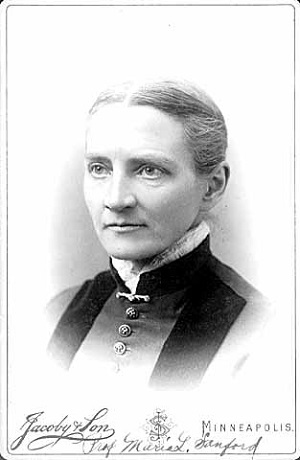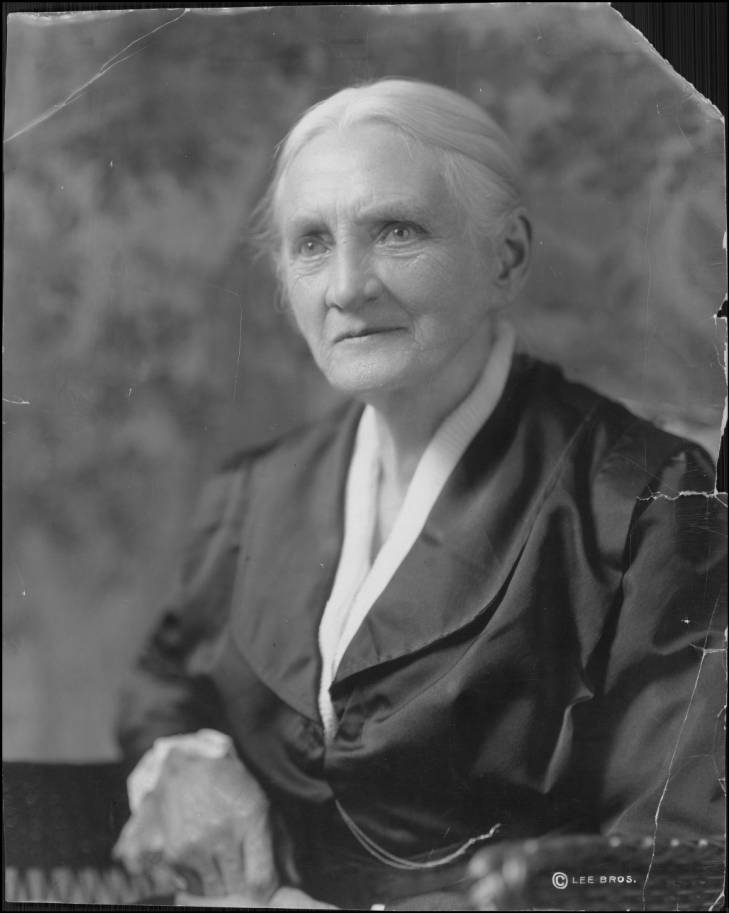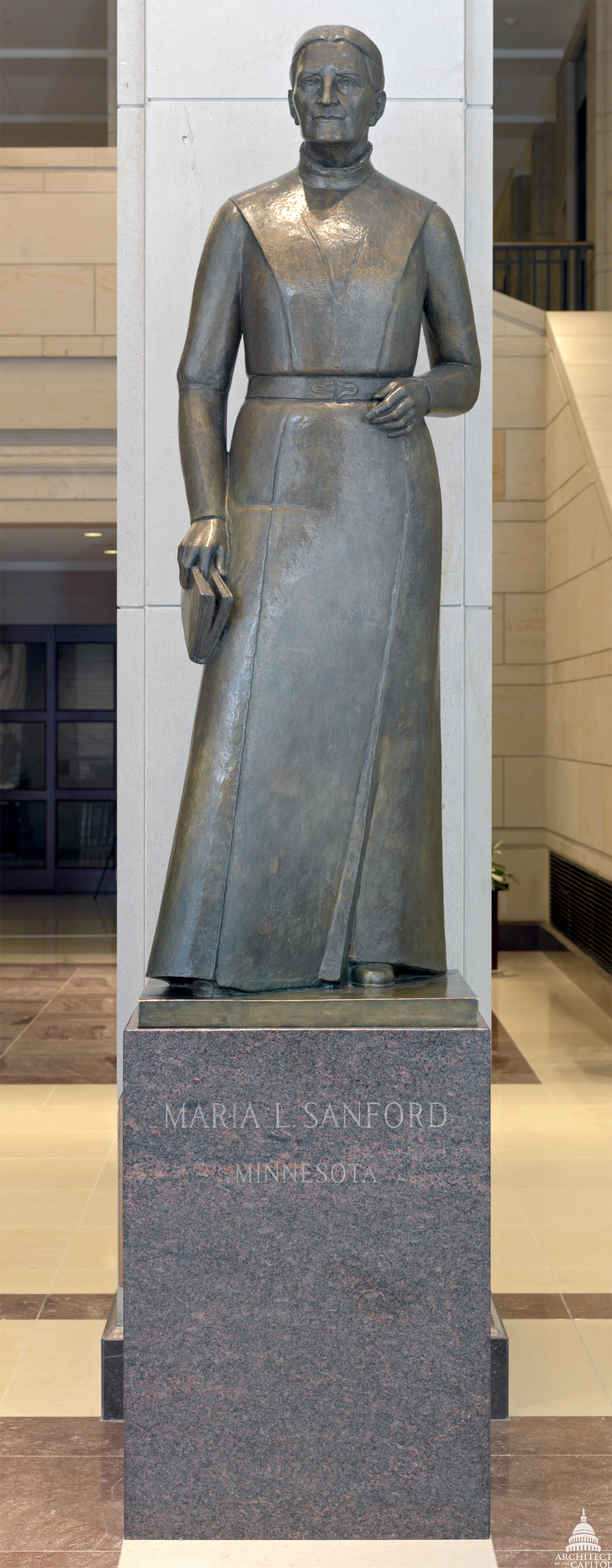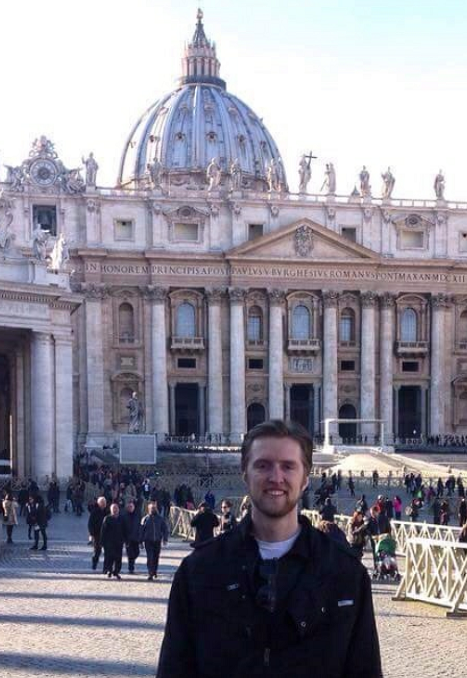
Ward 7 residents in neighborhoods far and wide including Bryn Mawr, East Isles, Elliot Park, Kenwood, Loring Park and Lowry Hill have come face to face with our unsheltered neighbors living in encampments throughout our parks and city. It is estimated that there are currently approximately 100 encampments in Minneapolis. I appreciate that many of you have reached out to me, clearly articulating deep concern for all impacted by this crisis. Many of you have expressed that we are doing a disservice to those living in encampments and to all of the thousands of neighbors who don’t have their own green space and rely on this park for their only recreation during this time of COVID. The need for innovation and collaboration focused on addressing this crisis has never been greater.
We are in a time of great uncertainty and high anxiety. The city and our partners at the county and state are stretched to capacity as we work to respond to the numerous crises impacting our communities. I am very pleased that a group of Minneapolis-based (many from Ward 7) advocates and elected, nonprofit and philanthropic leaders including myself, are working collaboratively with City staff and our jurisdictional partners to develop innovative solution that address the needs of the over 4,000 people, disproportionately Native American and Black, who are homeless on any given night in Hennepin County. Of this 4,000, 800-1000 are living outdoors in Minneapolis.
Working in partnership with social service professionals, private philanthropy, City staff, other governmental partners and people with lived experience of homelessness, this group has leveraged their diverse expertise to develop The Indoor Villages Pilot Project www.indoorvillages.org. This innovative project is on track to be open by winter 2020.
It will be a welcome compliment to the other initiatives that will increase the availability of dignified emergency shelter with trauma informed supportive services. The Indoor Villages Pilot Project is a rapidly deployable indoor community that addresses the urgent need to expand and enhance shelter and supportive services for people in Minneapolis experiencing unsheltered homelessness.
Indoor Villages is an interior community made up of secure, private dwellings (“tiny shelters”) within a climate controlled indoor structure designed to prevent the spread of COVID-19 and promote safety, stability and wellbeing. Trauma informed support services, such as mental health, chemical dependency and harm reduction services will be available on-site. The design and programming of Indoor Villages has been directly informed by people with lived experience of homelessness as well as our lead service providers, fiscal agent and shelter operator, Special Treatment Services and Simpson Housing Services.
The Indoor Villages Pilot Project is not meant to replace, rather complement and expand on existing government resources in partnership with State, County and City government entities. Last month Hennepin County and the City of Minneapolis issued $3.5M in federal emergency aid related to Covid-19 to establish 50 beds for the American Indian community; 50 beds for homeless women; and approximately 203 beds for the elderly, medically frail and veterans (Star Tribune, 2020) for a total of 303 beds. Unfortunately, this does not meet the current demand that is anticipated to grow, in the coming months, due to COVID-19 economic impacts.
We are so grateful that a Ward 7 local, family foundation generously stepped forward with a significant matching grant to launch this innovative pilot. We at the City are actively supporting the project’s pursuit of additional State, County and private funding opportunities so that we can add approximately 100 desperately emergency shelter beds by this winter.
I invite you to learn more and get involved with Indoor Villages fundraising, communications and outreach efforts www.indoorvillages.org.
You can view the coverage of this initiative on WCCO through this link: https://minnesota.cbslocal.com/2020/08/18/indoor-tiny-house-community-for-homeless-planned-in-minneapolis/amp/
Peavy Plaza Summer Season
Green Minneapolis in conjunction with Stronger Futures and the YWCA is offering free concerts and yoga classes in Peavey Plaza.
Thursday, August 27, 12:30 pm: Youth music and dance performances in partnership with Strong Roots Foundation.
KNOWN: A local youth choir made up of youth ages 10-21 years old. This choir is made up of youth that just want to sing and make music. This is a fun community choir that has brought joy and smiles to rally’s events and festivities right here across the Twin Cities.
Hopewell Music Cooperative North: Hopewell is about more than just music, it is about equal opportunities and access to music education. Music has the added benefits of instilling values such as discipline, resilience, cooperation, and good communication while providing both youth and adult students with a creative outlet. As an inner-city music school that is what we strive to do.
YMCA: Yoga Classes
Saturday, August 29 at 10:00 am
Monday, August 31 at 5:30 pm
Saturday, September 12 at 10:00 am
In addition to those activities, the Minnesota Orchestra is holding Chamber Music on Peavey Plaza every Tuesday through Sunday from 7:00 – 8:00 pm through the end of August.
Tickets are required to be seated in the basin of the plaza but the music will flow up and out for all to enjoy.
These evening programs are designed by Minnesota Orchestra musicians and each concert will feature a piece of music written by a Black composer. The repertoire will be announced from the stage and will also include music by composers such as Ludwig van Beethoven, Benjamin Britten, Valerie Coleman, Samuel Coleridge-Taylor, Paquito D’Rivera, Jean Françaix, Devonté Hynes, Wolfgang Amadè Mozart, Daniel Bernard Roumain, William Grant Still, Igor Stravinsky, Jerod Tate, Heitor Villa-Lobos and George Walker, among many others.
Visit the Minnesota Orchestra website for more information.
*The basin and fountains of Peavey Plaza will be turned off a portion of the day due to this event.
Mayor Frey Delivers 2021 City Budget Address
Minneapolis Mayor Jacob Frey delivered his 2021 budget address, which underscored his commitment to maintaining core City services, the City’s response to COVID-19, and new public safety transformation work. Frey has recommended continuing an enterprise-wide hiring freeze, reductions in spending across the board, and broad departmental reorganizations to maintain current service levels.
Without cuts, offsetting $35 million in lost revenue would have required a property levy increase of more than 15%. Frey’s measures will result in a 5.75% levy increase for 2021, but the overall growth to the city’s tax base means that median valued homes ($281,500) will actually see a 3% decrease ($47) under the mayor’s proposal.
Frey’s 2021 budget proposal also reinforces his commitment to affordable housing as a top priority. The proposal makes the Stable Homes Stable Schools program permanent. Started as a three-year pilot program, Stable Homes Stable Schools has housed or provided housing stability for 330 families and 946 children. Over 95% of the families served through Stable Homes Stable Schools are Black, Indigenous and people of color.
Frey also unveiled several public safety initiatives, including $2.5 million in ongoing funding for the Office of Violence Prevention to implement a violence intervention initiative. Trained violence interrupters and outreach workers prevent shootings in this model by mediating conflicts in the community and following up with individuals to decrease retaliation.
Frey is also allocating funding to provide staff from the Office of Violence Prevention with an office space in community to increase accessibility.
In his address, Frey continued making the case for a culture shift within the Police Department and advocated for meaningful arbitration reform.
The budget also features a move that adds positions to 311 to answer crime-report only calls and shift those calls away from the MPD to reduce demands on sworn officers’ time. The measure is estimated to save the City $336,091 annually.
City Council Approves Jim Rowader as New City Attorney
The City Council has approved Mayor Jacob Frey’s appointment of Jim Rowader as the new City Attorney.
Rowader currently serves as vice president of general counsel employee and labor relations for Target Corp. He will start working at the City Aug. 24. Before joining Target in 1994, he was an attorney for the National Labor Relations Board in Detroit and subsequently for a Twin Cities law firm. He is a board member of the Minnesota Justice Research Center and the American Civil Liberties Union of Minnesota. He’s also an active member of the Hispanic National Bar Association and the Minnesota Hispanic Bar Association.
He has served as vice chair of the Minneapolis Workplace Advisory Committee, which advises City leaders on workplace regulations and policy.
The City Attorney’s Office is organized into two divisions: Civil and Criminal. The Civil Division provides a broad range of legal services to the City’s elected officials and staff, the City’s departments, and independent boards and commissions. The Criminal Division prosecutes misdemeanor, gross misdemeanor and petty misdemeanor crimes within the city.
Complete Your Census by September 30, Census Takers Begin Door Knocking
Have you completed the census yet? Completing the census will ensure that our communities receive resources for programs and services that we need. Many programs that our communities rely on, including SNAP, Medicaid, CHIP and Head Start are funded through data that is obtained by the census. The 2020 Census is our chance to shape the future of Minneapolis for the next 10 years.
Census takers have begun following up in Minneapolis with households that haven’t yet completed the 2020 Census. Census staff have been hired locally and are here to help households complete their census forms. The goal of census door knockers is to help get an accurate count. Census staffers can be easily identified by a valid government ID badge that includes their photograph and a U.S. Department of Commerce watermark.
Census field staff follow both CDC and local public health guidelines, are trained in physical distancing protocols and will provide census takers with masks during their visit. Census staff have sworn a lifetime oath of confidentiality. Any information that you provide to them will not be shared with any entity other than the Census Bureau for statistical purposes only and never to identify an individual.
Find more information here on verifying a census taker’s identity, COVID-19 protocols or the strategy to visit households that haven’t responded yet.
Fill out your census
If you haven’t yet completed the 2020 Census application and would like to avoid a census taker coming to your home, you can submit your form online, by phone or through the mail (using the U.S. Census Bureau form that you received in the mail at home). Language assistance is offered in multiple languages online or over the phone and can also be requested at your visit if they come to your home.
Take your census by Sept. 30
The U.S. Census Bureau officially announced that the 2020 Census self-response period will end Sept. 30, 2020. This means that there are less than two months remaining to ensure that our communities are counted and that we get the resources that we need for the next 10 years.
In 2010, Minneapolis had a census completion rate of 72.8%. Currently, Minneapolis has a completion rate of 69.9%. It is important – now more than ever – that our communities are counted.
Let’s get counted, Minneapolis.
City Seeking Diversity of Applicants for Fall Openings on Boards and Commissions Appointments
Twenty-four City boards and commissions have openings for appointments this fall. The City seeks applicants with a diversity of backgrounds and experiences representing the demographics of Minneapolis to strengthen the work of the City. Translation and interpreting services are available so all residents can participate. The positions are open until filled; application review begins Sept. 30 unless marked otherwise.
City boards and commissions have brought forward recommendations that resulted in renter protections, wage protections and a ban on a hazardous chemical in dry cleaning. Board and commission members in the City of Minneapolis help shape key policy decisions, give community-based input into the City’s administration of services and supply valuable insights.
People can apply through the open position pages linked below and stay up to date on vacancies, position descriptions and timelines by visiting minneapolismn.gov/boards/openings. Applications are open now.
Boards, commissions and advisory committees
The City of Minneapolis has more than 50 volunteer-based boards, commissions and advisory committees that advise the City on issues and help develop policy and administer services. Boards and commissions fall into a handful of categories: appeal boards, development boards, general advisory boards and special service districts (defined areas within the city with special services).
Appointments to boards and commissions are made twice a year: in the spring and fall.
Potential applicants can find more information at 612-673-2216 or OpenAppointments@minneapolismn.gov.
National Night Out Recommended Date Changes to Sept. 15 for 2020
The Minneapolis recommended National Night Out date for 2020 is Tuesday, Sept. 15. Residents can find out if their block is already signed up by emailing crime.prevention@minneapolismn.gov. Registered block leaders received notices directly about closing their streets to hold their event, but a block without a block leader could still hold a COVID-19 safe event by spreading out across three or four yards to make enough space for physical distancing.
Event safety in a pandemic
A safe event during a pandemic follows guidelines from the Minneapolis Health Department, Minnesota Department of Health and Centers for Disease Control and Prevention:
- Events are outdoors.
- People keep their masks on when they’re not eating or drinking.
- People keep at least 6 feet from others not in their household.
- Households bring their own food, beverages, utensils, tables and chairs.
National Night Out is an annual nationwide event that encourages residents to get out in the community, holding block parties and getting to know their neighbors to prevent crime. It’s a great way to promote community-police partnerships and enjoy a Minnesota summer evening surrounded by friends and family.
Find out more about National Night Out.
Seventh Annual Minneapolis Trans Equity Summit Goes Virtual
Hosted by the City of Minneapolis, the seventh annual Trans Equity Summit takes place Sept. 13-15. Because of the COVID-19 pandemic, all attendance this year will be virtual.
Trans Equity Summit
September 13-15
2-4 p.m. and 7-9 p.m.
Register online
Join Facebook event
This year's theme is "Claiming Our Power for Change: Caring for Community." In this moment of deep pain and radical possibility, Minneapolis is centered locally, nationally and globally as a place from which potential new futures can be born. Organizers, healers and artists are redefining community, connection and the expansiveness of their own power. As always, trans and gender non-conforming folks are at the forefront.
Programming includes breakout sessions, performances, a job and resource fair, and healing justice offerings. Space is available for community care, for collective witnessing, and for trans/gender-non-conforming folks to find or further assert their places and power in this pivotal moment.
The summit is free and open to the public, and we encourage anyone interested in furthering trans equity to attend.
Find updates on the Trans Equity Summit here.
COVID-19 Situation Update as of August 19, 2020
Situational updates: Minneapolis
- There are 8,310 cases in Minneapolis and 212 deaths. The City shares Minneapolis-specific daily case counts and demographics at www.minneapolismn.gov/coronavirus/dashboard.
- Mayor Frey’s Emergency Regulation No. 12 regarding masks remains in effect. The regulation requires people to wear face coverings in all indoor public places.
- Mayor Frey’s Emergency Regulation No. 17 regarding bars and restaurants remains in effect. The regulation closes bar areas in restaurants, nightclubs, and indoor spaces of entertainment. Food and beverages can be served tableside while patrons are seated and patrons can approach the bar to order as long as they don’t congregate.
- Minneapolis Public Schools (MPS) has outlined five phases for easing students back into in-person learning over time. When school starts in September, MPS will be under Phase 2: Distance Learning with Student Supports. With Phase 2, all learning is done through distance learning, but students will be provided with supports such as tutoring, technology, and mental health at certain school buildings.
Situational updates: Minnesota
- There are 66,618 cases in Minnesota out of over 1.3 million tests completed. There have been 1,727 deaths from COVID-19 in Minnesota. There are 20,853 cases and 855 deaths in Hennepin County.
- The Health Department is using a color-coded map with multiple layers to show a seven-day rolling average of new cases in Minnesota. The State is at 11 cases per 100,000 and Minneapolis is at 16 cases per 100,000. These numbers put both Minnesota and Minneapolis in the orange category, which represents accelerated spread of COVID-19.
- Minnesota is currently in Phase III of the Stay Safe MN plan for reopening.
- Governor Walz’s statewide mask mandate remains in effect. People are required to wear masks in all indoor public places where people gather and some outdoor venues where physical distancing is difficult.
Health Incident Command Updates As the Minneapolis Health Department (MHD) continues to respond to COVID-19, we are applying an equity lens to all our work in conjunction with partners across the City enterprise.
Businesses: Health inspectors are assisting with permitting and inspecting larger public events that will serve food to ensure they are following the governor’s executive orders, including having an approved COVID-19 Preparedness Plan and meeting food safety standards. MHD staff worked with Communications to develop new posters to encourage people to wear masks when patronizing local businesses. These posters, which are geared toward young adults visiting bars and restaurants, are available in multiple languages on the City’s COVID-19 Print Resources webpage.
Case investigations: MHD is conducting over 50 case investigations and contact follow-ups per day for individuals diagnosed with COVID-19. Currently, there are 26 investigators, including six non-MHD enterprise staff. Of the 8,310 cases in Minneapolis, 85% have been interviewed, 2% have refused, 8% have been lost to follow-up, and 5% are new cases that still need to be interviewed. Twenty-four percent of interviews of Minneapolis residents are in a language other than English.
Community testing:
- Approximately 500 community members were tested at the Incarnation- Sagrado Corazon Church on Saturday, August 15. MHD staff will be supporting a second testing event at PICA McKnight (4225 3rd Ave S, Minneapolis, MN 55409) on Tuesday, August 25, from 11 a.m. to 7 p.m. The testing is free for everyone. Both drive up and walk up testing will be provided. Online pre-registration is available, but not required.
- Free testing will also be available at Phelps Park (701 E 39th St.) on August 25 and 26 in collaboration with the Native American Community Clinic, Hope Communities, Minneapolis Parks and Recreation Board (MPRB), and the University of Minnesota from 2:00 p.m. – 6:00 p.m.
- MHD is collaborating with clinic and community partners to support and provide testing in the East African community. Community testing will be available at Abubakar As-Sadique Islamic Center (2824 13th Ave S.) on September 19 and 26. Additional testing opportunities are being planned for this Fall.
- Community testing is being planned for a north Minneapolis site in September.
- In preparation for cold weather, MHD staff are planning for indoor or sheltered COVID- 19 testing sites as well as for vaccine locations when a viable vaccine becomes available.
Food security:
- MHD continues to co-host a weekly free food distribution event at Powderhorn Park (Fridays, 11 a.m. to 2 p.m.) for 400-700 households, primarily serving the Latinx community.
- MHD convened a meeting with over 25 grasstops food insecurity partners to identify long-term capacity and potential strategies since humanitarian food distribution will continue into the Fall. Staff continue communication and outreach with pop-ups and food shelves from north and south Minneapolis.
- One issue being addressed involves ensuring food safety while sustaining community food assistance. An internal City workgroup is meeting to balance the needs of pop-ups who want to provide low barrier food support with the City’s regulatory authority to ensure that providers are using food safe practices and are complying with the City’s food licensing program while addressing equity, accessibility, and other systemic barriers to food security and distribution.
Encampments:
- The large encampment located on the west side of Powderhorn Park was recently demobilized. In accordance with the Park Board’s safe school zones guidance, the park has been completely cleared of tents because of its proximity to Wilder School. Currently, there are more than 400 tents located in 34 parks across the city; most are permitted according to MPRB guidelines.
- City staff are monitoring two new encampments located on City-owned land: one behind the former Kmart site on Lake Street and another at 9th Avenue and 13th Street. In addition, MHD staff are assessing sanitation needs for an encampment of RVs located in a small park across from Xcel Energy in northeast Minneapolis.
Personal Protective Equipment: MHD has continued to respond to requests for masks and other supplies. In the past week, staff distributed 5,250 masks (1,900 one-time use masks and 3,350 reusable cloth masks) and 345 bottles of hand sanitizer to neighborhood organizations, small businesses, faith communities, healthcare, and community-based organizations.
 Friday, August 28, 2020 at 12:10PM |
Friday, August 28, 2020 at 12:10PM |  Kim Eslinger |
Kim Eslinger | 































 Photo credit Tony Nelson Photography
Photo credit Tony Nelson Photography












